The Evolution of Women in Art: Nudes Throughout History
- Middle Ages & Pre-Renaissance: A Different Take on Nudity
- Renaissance: Celebrating the Human Form
- Botticelli
- Mannerism and Rococo: Marking Freedom in Nude Art
- Agnolo Bronzino
- Jean-Honoré Fragonard
- Romanticism and Realism: A Radical Shift for Nudes
- Francisco de Goya
- Gustave Courbet
- Impressionism: Redefining the Female Nude
- Edouard Manet
- Edgar Degas
- Expressionism: Women Nudes in Turmoil
- Egon Schiele
- Otto Dix
- Modern Art: Exploring the Nude in Various Expressions
- Tom Wesselmann
- Hildegarde Handsaeme
- Timeless Depictions of the Female Nudity
Throughout the vast expanse of art history, the portrayal of the human body has always held a significant and enduring place. From ancient times until today, artists have found inspiration in the form of human beings.
Consider iconic masterpieces such as Botticelli's "The Birth of ," Courbet's "The Origin of the World," or Modigliani's "Reclining Nude" – all showcasing the female figure in its natural state.
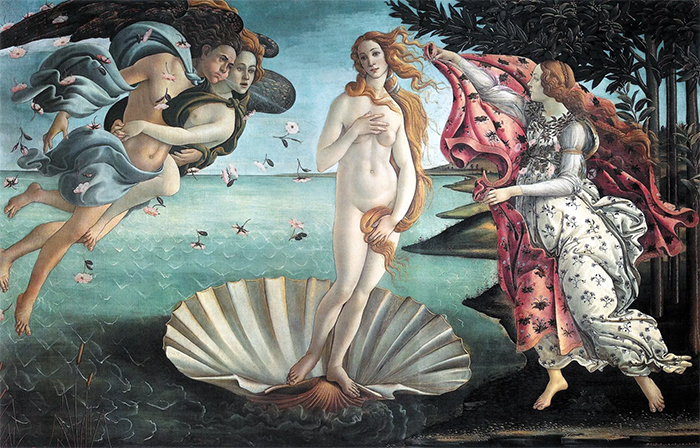
Nude art encompasses a wide range of subjects, with celebrated painters like Matisse and Ingres creating their own versions of "odalisques," Renoir and Cézanne depicting scenes with bathers, and Manet's provocative piece "Olympia" challenging societal conventions.
The human body embodies beauty, desire, dreams, and even elements that are considered forbidden – serving as an irresistible muse for artists.
Across centuries, nude art has frequently sparked controversy and influenced our notions of beauty and physical forms. Beyond its subject matter, artists infuse personal interpretations into their artworks. Sometimes, defying the artistic norms was prevalent during their time. Join Artsper as we embark on a concise journey through a brief history of women's nude paintings in art.
Middle Ages & Pre-Renaissance: A Different Take on Nudity
During the Middle Ages, the Church utilized nudity as a means to convey the vulnerability of humanity. Recognizing that visual imagery played a crucial role in teaching religious principles to the illiterate. The Church commissioned artists to create:
- frescoes,
- sculptures,
- and paintings for their churches and religious manuscripts.
Art primarily served religious purposes back then, and nudity was often considered sinful. It symbolizes mankind's flawed and mortal nature. Depictions of nude figures were predominantly used for iconographic purposes.
For example:
- You can find naked characters on church tympanums referencing the realm of the Underworld.
- Biblical figures like Adam and Eve are closely associated with nudity and sinfulness. They were often portrayed in their simplest form, with either snakes or leaves modestly covering their private parts.
It is important to note that these exposed bodies, although visually resembling secular nudes, actually served a sacred purpose.
Masaccio
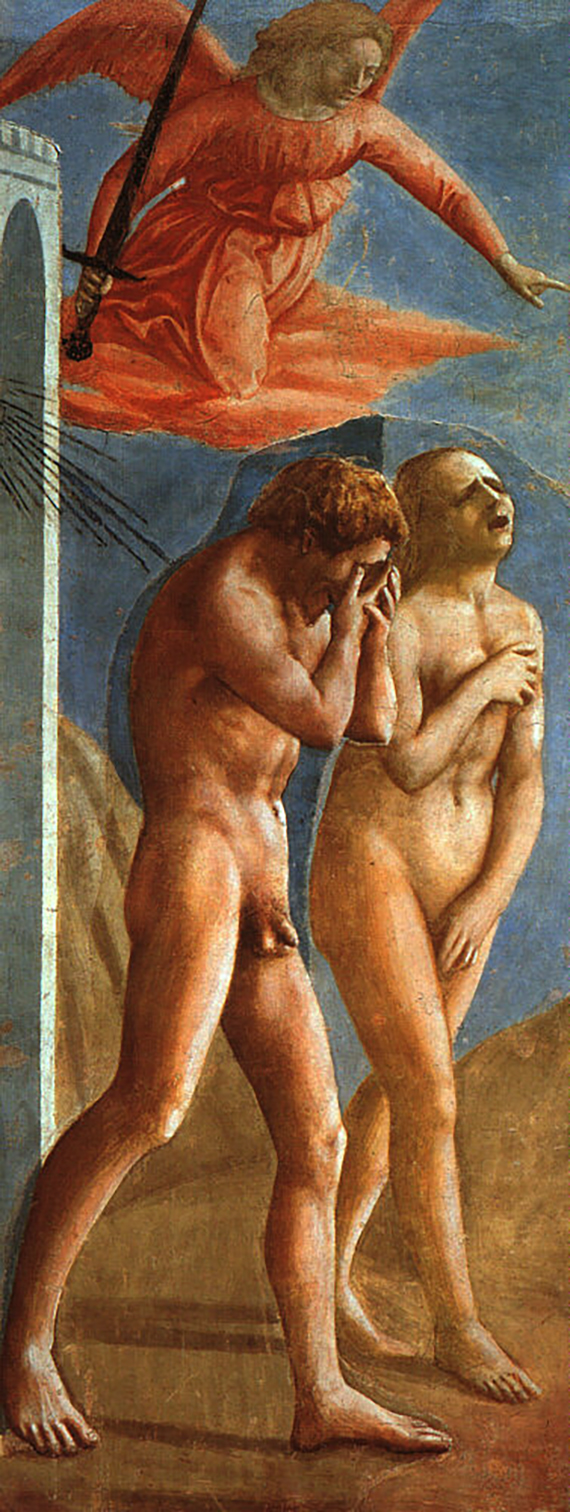
An Italian painter, Masaccio, crafted a fresco for the Santa Maria del Carmine church in Florence in 1425. This painting depicted Adam and Eve being forced out of the Garden of Eden.
Adam kept his eyes lowered and face hidden while Eve tried to cover her nakedness, her expression one of fear and shock. Above them stood an angel dressed in red, pointing outward with a finger. Both figures were bent forward with shame and trepidation at having to leave the paradise that was Eden.
Masolino
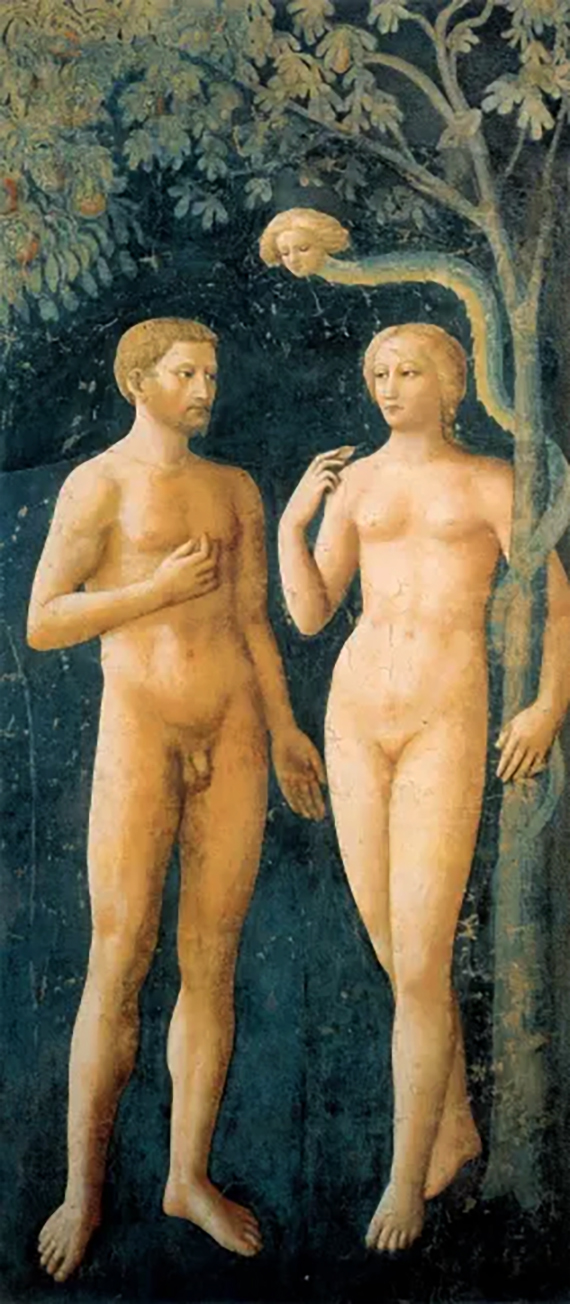
The same chapel contained another fresco by a different artist, Masolino, which he painted in 1424. It was titled The Original Sin.
Here, Adam and Eve looked at each other with serenity, standing tall and regal. A luminous glow emanated from their bodies as they were silhouetted against a shadowy background. It is fascinating to compare these two frescoes side-by-side.
In Masolino's interpretation, the Garden of Eden appears peaceful, beautiful, almost divine beings.
Conversely, Masaccio's work shows Adam and Eve being scared by an angelic figure; the human figures are realistically created instead of idealized like those of Masolino's version. This difference highlights mankind's state before and after committing the first sin.
Renaissance: Celebrating the Human Form
During the Renaissance, nude paintings went through a significant change, from symbols to being about beauty and sexuality. Artists got excited about using the human body as their canvas and worked hard to make it look natural. They paid close attention to getting the sizes right while watching real people.
They got their inspiration from ancient Greek statues, which balanced between looking perfect and real. This was especially clear in men, who looked more like real people with muscles. You might have heard of Leonardo da Vinci's Vitruvian Man from this time. It's a famous painting showing how carefully artists studied the human body back then.
Botticelli
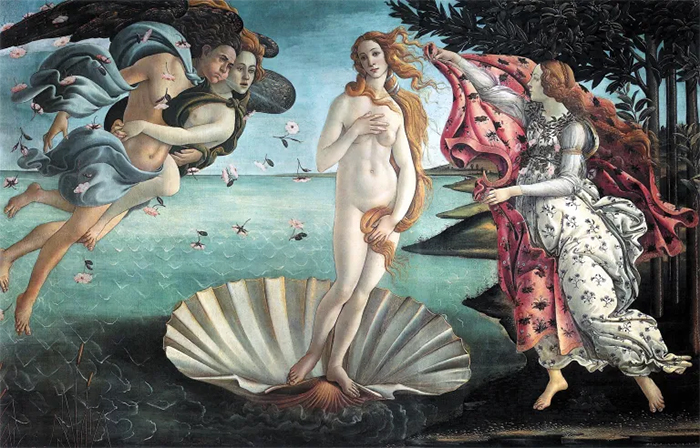
In 1485, he did something groundbreaking in Europe. Unusually, his painting of a female nude was not for religious reasons at that time.
This painting is nearly life-sized — featuring gentle Venus disclosing her body. Botticelli depicted Venus covering herself with her long hair and hiding a breast in one hand while leaving the other visible to evade any possible censorship restrictions. The slim line between revelation and disclosure imbues the artwork with an alluring mix of punctilious presentation and teasing mystery.
Venus is posed in an ancient technique called "contrapposto," where one leg is straight and the other bends slightly. Her hips and figure are accentuated, but she appears shaky on her feet in contrast to traditional portraits.
Looking at her face, you see she could be lost in thought or perhaps awakening from a dream. The sea is calm and breezy behind her—no storms on the horizon.
The creation of this piece marked an important moment for artist Botticelli. At the peak of his career, he did this at the request of wealthy patrons, departing from religious themes. Unlike religious art in the Middle Ages, his Venus embodies grace and elegance.
Mannerism and Rococo: Marking Freedom in Nude Art
In the 16th and 17th centuries, a period known as Mannerism, nude paintings broke free from any rules or religious limits. This was a time when artists had immense freedom in portraying the human body.
In Mannerist art, you see body shapes exaggerated and twisted, creating a sense of eroticism in the paintings. It was all about celebrating the freedom of artistic expression.
Agnolo Bronzino
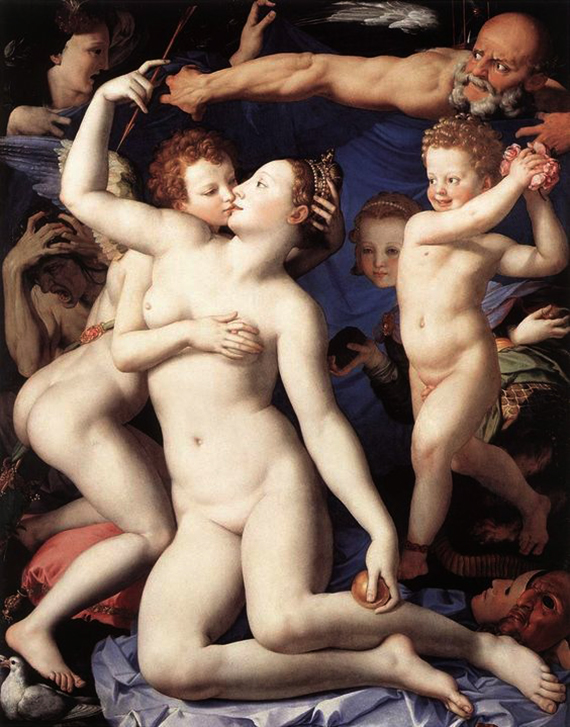
The "Allegory of the Triumph of Venus" is an excellent example of Mannerism. This masterpiece was made by Agnolo Bronzino in 1550.
Across this artwork, the wavy line created by the elegant curves of Venus is prominent. A special style from that period includes mild curves and bends that make those figures look even more graceful.
Now, here's the juicy part. Religious folks would not likely give this painting a thumbs-up. Beneath all this charm lies a scandalous scene — a kiss between Venus, the goddess of beauty, and her son Cupid, representing love.
Provocative, nontraditional, and sure to cause a stir — it definitely brings people together (or pushes them apart). People disagreed on it, not exactly following the moral guidelines of the period.
Contrary to Renaissance norms, this movement rejected outright ancient rules and classical pursuits. Instead, praise was given to the intricate designs and artificiality.
And guess what? Nude artists were really influenced by the Rococo style. Through their daring nude artworks, these painters celebrated the beauty of the human body.
Jean-Honoré Fragonard
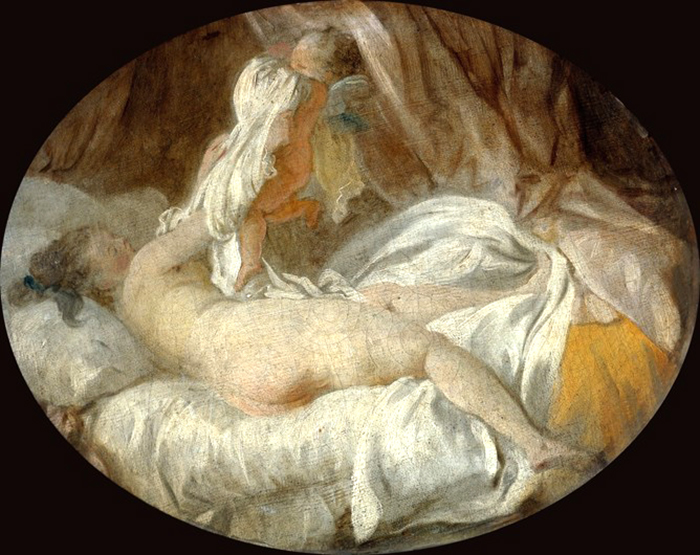
Jean-Honoré Fragonard, a talented painter, is known for his diverse works. He creates art in a range of categories, including landscapes and religious or mythological pieces. Known for creating brilliant, whimsical artworks in the Rococo style.
One of his works is "The Shirt Removed," from 1770. At the center of the painting, a bare woman is surrounded by cherubs or Cupid guiding her through undressing. With eyes closed, her form suggests she is trying to remain composed amidst this daring moment.
Highlighting the young lady's beauty through skillful use of color choices like white, gray, and pink is done by Fragonard. His exploration of the nude theme brought non-traditional elements to play. Both intimacy and irreverence open up new cultural possibilities outside classical motifs, including mythology or historical topics.
Romanticism and Realism: A Radical Shift for Nudes
The Romantic Age offered a fresh perspective that often combined realism with a touch of drama. Exoticism and harem-related fantasies were popular at the time. Free, naked paintings began to make erotic suggestions.
The conventions of classicism and neoclassicism were abandoned by romanticism. It was more concerned with things like vivid colors, stark contrasts, and lighting effects. Not merely what was depicted in the artwork but also how vivid and dramatic it appeared was important.
Francisco de Goya

He accomplished something rather remarkable for his time in 1790. In his painting "La maja desnuda," an actual woman with pubic hair is shown. The subject matter of this picture, in contrast to others, was simply the joy of being naked.
The woman in the artwork directs her confident gaze towards you without showing any shame. It's interesting to note that this picture was intended to remain secret and obscure from view because it represented Goya's mistress. But when it was found, society at the time was quite startled!
Realist artists used a different approach. They emphasized daily life and frequently depicted nudists from lower socioeconomic levels, such as prostitutes, actors, or lovers.
Gustave Courbet

Let's not ignore "The Origin of the World," a well-known picture by Gustave Courbet. It caused quite a commotion in the public and at art shows back in 1866.
The female genitalia are depicted in this uncensored piece of art. The conventional, flawless representations of nudity that are common in academic painting did not appeal to Courbet. He consistently tested the limits of what the public could see.
Impressionism: Redefining the Female Nude
Impressionist painters offered a novel perspective on nakedness. They abandoned clear body features and outlines in favor of brilliant colors and expressive brushstrokes that gave their figures a sense of movement and vitality.
This strategy generated a lot of controversy, especially when they showed regular women in their most natural states. Breaking the norm, impressionist painters experimented with different approaches to show the nude female.
Edouard Manet
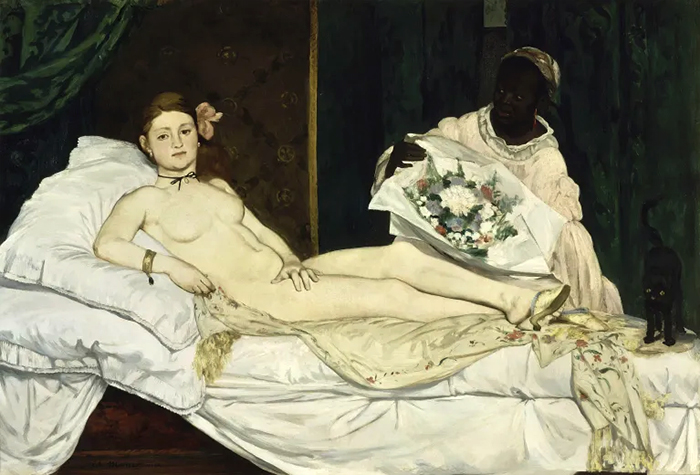
Back in 1863, Edouard Manet painted two pictures, Olympia and Déjeuner sur l'herbe, which went against the usual art rules. Manet wanted to show real life. In Olympia, he painted a prostitute, not a goddess or a mythical figure. He didn't try to make it all perfect and ideal.
But in the 1800s, it was okay to paint nudes only if they were in exotic or mythical places. In this painting, the nude woman is different and bold. She looks right at you like she doesn't care.
This shocked people because in other paintings, nude women act surprised, like they didn't want to be seen naked. But with Olympia, she challenges that idea.
Edgar Degas
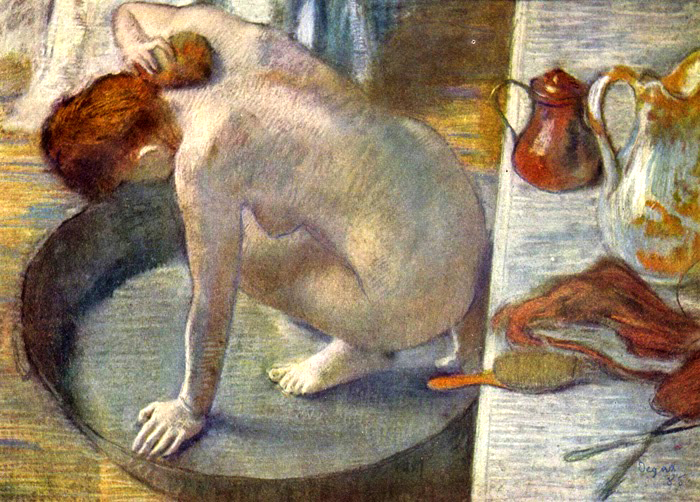
He enjoyed painting naked people, and they were one of his favorite subjects. He was an innovator in this genre, employing various methods, which makes it intriguing.
Degas employed painting, pastels, and drawing. He preferred pastels because they allowed him to work rapidly and duplicate images without worrying about the colors fading.
His 1886 composition "The Tub" is one of his best pieces. This pastel painting is an exquisite example of naked composition. In this piece of art, the positioning of the lady, the toiletries, the masterful use of perspective, and the overhang all work together perfectly.
Paul Cézanne
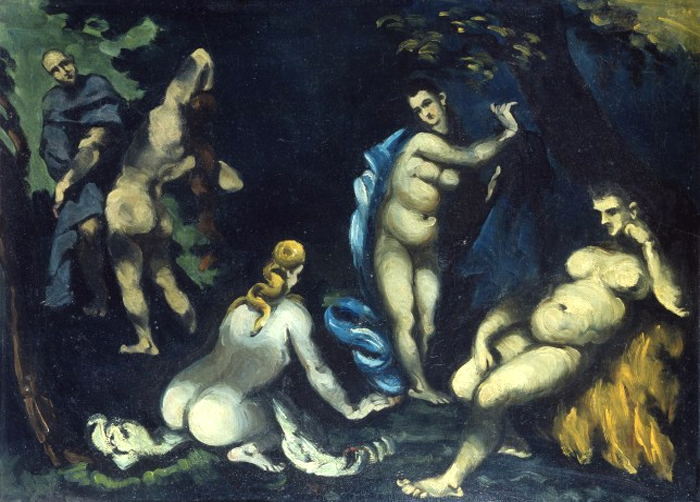
Let's talk about Paul Cézanne and his paintings of nude women. He had his own way of painting women. In his works, like the temptresses of Saint Anthony and his bathers, he showed women in a rather complicated and emotional light.
In Cézanne's painting "The Temptation of Saint Anthony," he shows some women who look pretty gloomy with greenish, unhealthy skin. Typically, St. Anthony is the main focus, but here, he's pushed to the side and hard to see.
Instead, we're drawn to these three women with big bodies, including bellies and breasts. On the left, there's a fourth figure, not as well-lit, dancing in front of St. Anthony.
The painting feels kind of sad because of the way light and dark colors are used, like brown, gray, yellowish, and dark green. Take a look at the woman on the right — she even has some manly features. It's all a bit strange and unsettling.
Cézanne didn't want to ask real women to pose naked for him back then. Some experts think that he tried to show his fear of women with this painting. It's like he felt really uncomfortable around their bodies.
Cézanne's earlier provocative paintings led to his "Bathers." In "Bathers," he tried something new. He took away the story and details and then simplified the shapes a lot.
The women in the painting don't have clear faces. Plus, the shapes and colors mixture makes the women and the background almost like one. These nudes were quite different and started the idea of abstract art.
Expressionism: Women Nudes in Turmoil
Expressionist artists portrayed women differently in their works of art. Instead of using conventional borders and shapes, they used vivid colors and strong strokes to give the bodies they painted vitality and life.
This novel approach to nudity frequently aroused debate. Expressionist artists emphasized ordinary women in their natural shapes as a means of expressing variety via representation.
Egon Schiele
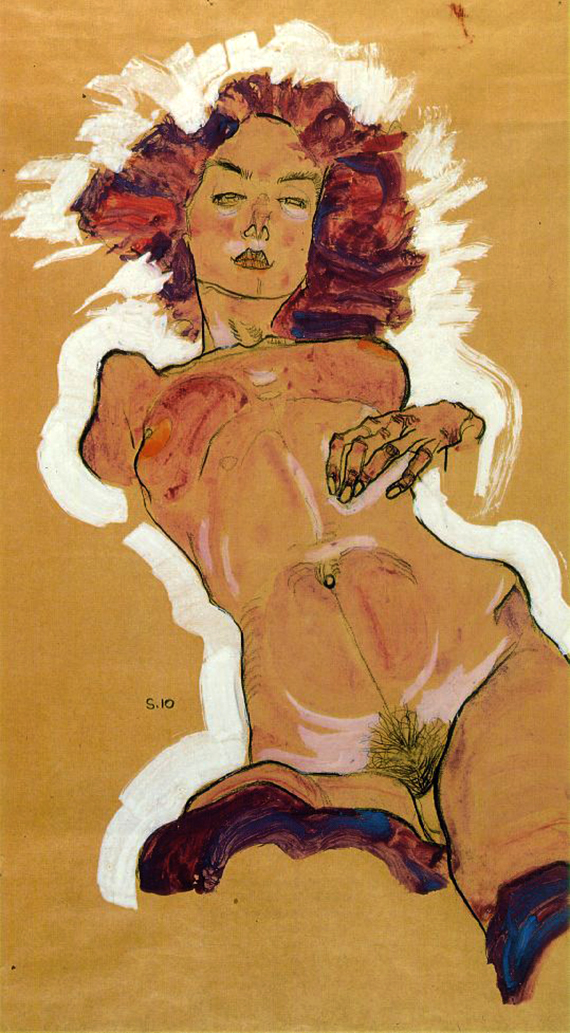
Egon Schiele was a well-known member of the German Expressionist movement. He was famous for his controversial artwork in the early 1900s and was close friends with Gustav Klimt.
His works were distinct from the conventional and acceptable art of the day because they were bursting with tremendous eroticism. His specific style may be recognized by the twisted figures he painted and the expressive lines he employed.
Schiele began depicting naked women in diverse ways around 1910. In one of his paintings titled Female Nude, a naked lady is painted in an unusual pose, seeming very thin and eerily lifeless. The individual appears to be alone due to the simple background and white halo surrounding their body.
The fact that the eyes are closed and the hand is positioned such that you may picture a person at a funeral illustrates how Schiele combined his thoughts on sex and death. However, this artwork is also quite strong. It's a dramatic and fascinating scene because of the messy hair, fierce expression, and warm colors employed.
Psychoanalysis, a novel concept at the time, is related to Schiele's naked paintings. He used the naked body to express his deep worries about life. His works demonstrate how our bodies may serve as both a symbol for our ambitions and a reminder of our death.
Schiele's nude paintings caused some to label him a "pornographer" or "psychopath" in the early 1900s because they thought they were too disturbing.
Otto Dix

Otto Dix is a firsthand observer of the twentieth century's greatest atrocities. He never ceased criticizing the savagery and ridiculousness of his generation via his paintings.
He was drawn to bizarre, macabre, offensive, and ugly circumstances. The painter depicts prostitutes, war widows, and tormented women.
In the painting "Half-Naked," Otto Dix finds himself drawn to a lady who is attempting to hide her body modestly. The painting makes you feel uncomfortable and embarrassed.
Otto Dix is presenting to us a world that, in his opinion, is dreadful through this lady and her efforts to conceal herself, her enormous breasts, her thick makeup, and her sad face.
Modern Art: Exploring the Nude in Various Expressions
Artists still draw inspiration from the human body in contemporary times. Similar to the Impressionists of their day, these artists are altering how we perceive nudity.
To capture the beauty of bodies, innovative and inventive techniques are applied. They push us to reconsider what it means to be naked and alter our viewpoints. These artists demonstrate the alluring and powerful qualities of the nude via their diverse techniques.
Tom Wesselmann

After World War II, artists started putting together nudes while incorporating their personal artistic styles. Tom Wesselmann, an American artist, was an important figure in the Pop Art movement.
He formed female nudes using items found and pictures from magazines or books. His work was daring and did not emphasize particular individuals.
It rose to fame in the 1960s and was seen as incredibly sensual. Wesselmann intended for his nudes to elicit strong feelings in viewers. As he said, his paintings were meant to make people feel powerful.
Hildegarde Handsaeme

Hildegarde Handsaeme's nude paintings celebrate women. The bodies are artistic and full of vibrant colors, as the cubist artists did in the past. The nudity is straightforward, and the shapes are generous and curvy.
She uses flat areas of color to make the bodies stand out in her art. Her work is very personal and shows that art and nudes can be limitless and hard to describe in words.
From the Modern era, nude paintings have mainly depicted women's bodies, a result of artists (and society!) making it something men desire. But ironically, the female body was less appreciated during that era than the more muscular male body.
Timeless Depictions of the Female Nudity
The way artists have portrayed women's bodies in Western art has made some of the world's most famous artists well-known. It could be religious or free-spirited, and the female nude has been depicted in countless ways over the years.
Depending on the era, it might symbolize Eve's innocence or shame, the beauty of an ancient goddess, or the free-spirited women of the 18th century. Do you have a favorite painting of a nude woman?
No Comments Yet...